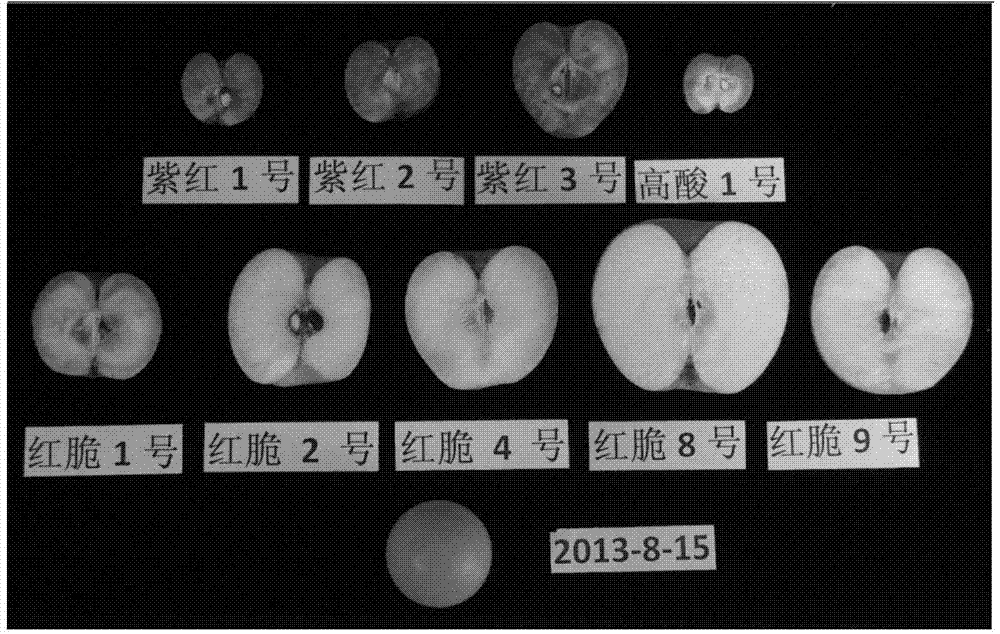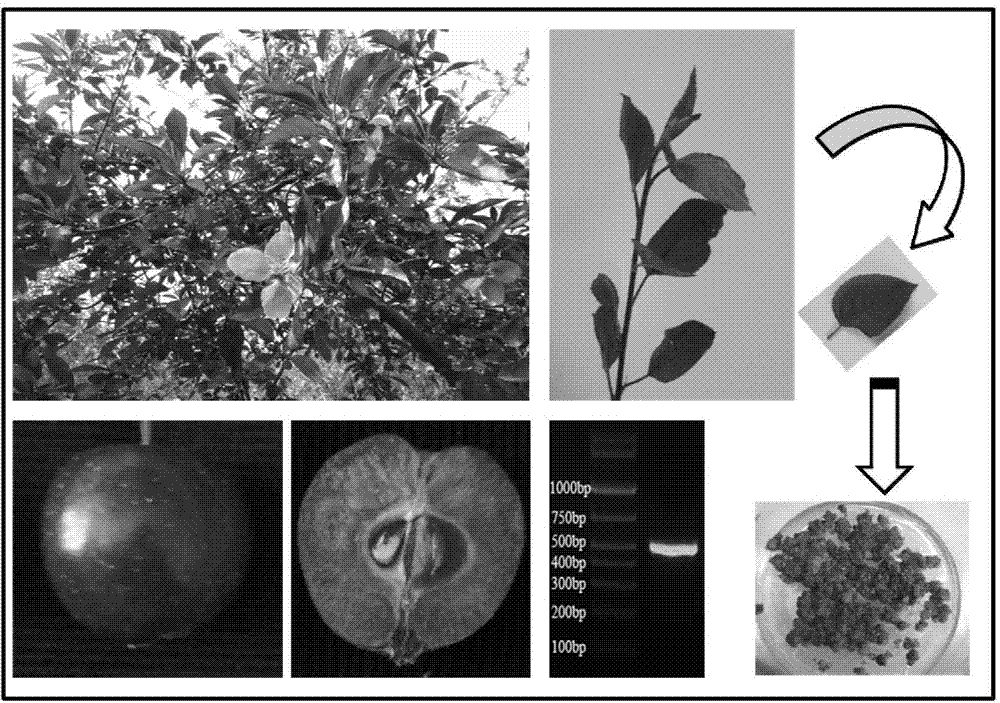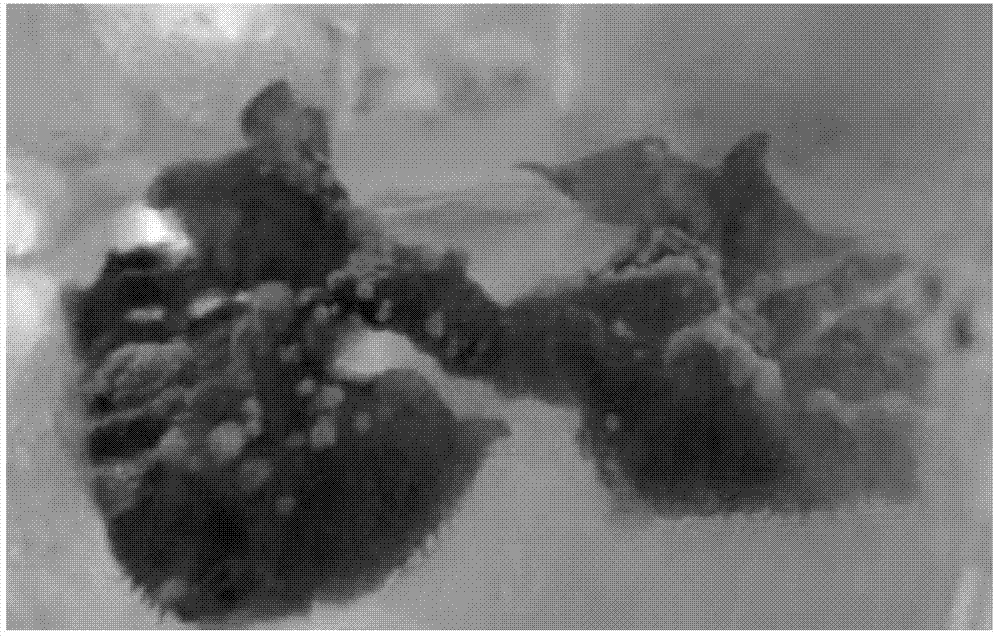Production of apple flavonoids by using tissue culture method
A tissue culture and flavonoid technology, applied in the field of biology and plant biology, can solve the problems of poor or poor quality of fresh food, low separation ratio, and difficulty in new functional apple varieties.
- Summary
- Abstract
- Description
- Claims
- Application Information
AI Technical Summary
Problems solved by technology
Method used
Image
Examples
Embodiment 1
[0046] Embodiment 1, utilize tissue culture method to improve apple flavonoids
[0047] 1. Obtaining of explants
[0048] 1. Construct F1 segregation population
[0049] The 'Xiahongrou' Xinjiang red flesh apple preserved in the Xinjiang Tire National Germplasm Resource Garden was used as the male parent and the 'Red Fuji' apple variety was used as the female parent to construct a hybrid first generation (F1) segregation population;
[0050] 2. From F 1 Separation of populations for selection of explants
[0051] Primers were designed according to the red apple transcription factor MYB10 promoter sequence (R6),
[0052] The primer sequences are as follows:
[0053] F: 5'-GGTGGTCAAAGATGTGTGTTG-3' (SEQ ID NO: 1)
[0054] R: 5'-CTTATCTTTTGCCTGCTACCC-3' (SEQ ID NO: 2)
[0055] Using the genomic DNA of the apple pulp tissue of the hybrid first generation (F1) population as a template, the above primers were used for PCR amplification, and the band with a size of 504 bp was obta...
PUM
 Login to View More
Login to View More Abstract
Description
Claims
Application Information
 Login to View More
Login to View More - R&D
- Intellectual Property
- Life Sciences
- Materials
- Tech Scout
- Unparalleled Data Quality
- Higher Quality Content
- 60% Fewer Hallucinations
Browse by: Latest US Patents, China's latest patents, Technical Efficacy Thesaurus, Application Domain, Technology Topic, Popular Technical Reports.
© 2025 PatSnap. All rights reserved.Legal|Privacy policy|Modern Slavery Act Transparency Statement|Sitemap|About US| Contact US: help@patsnap.com



